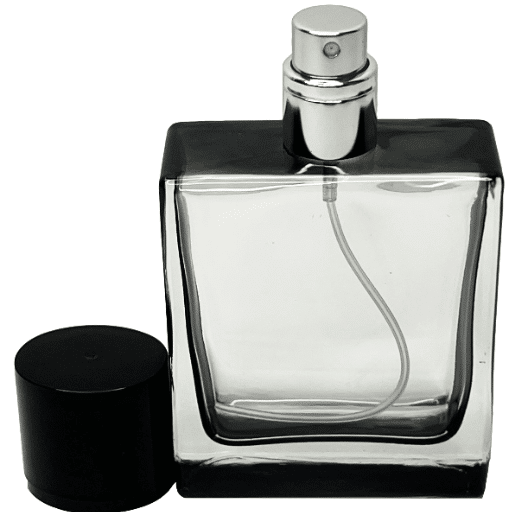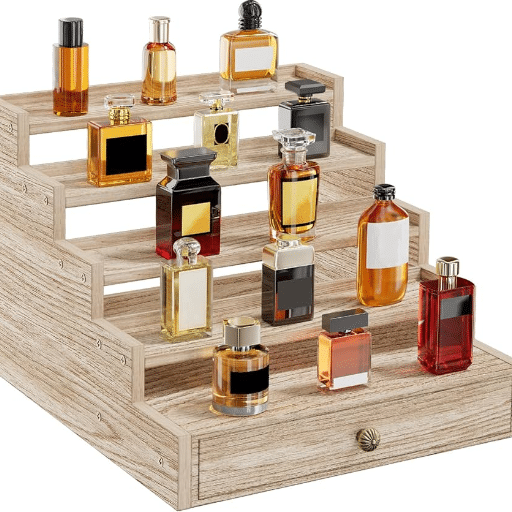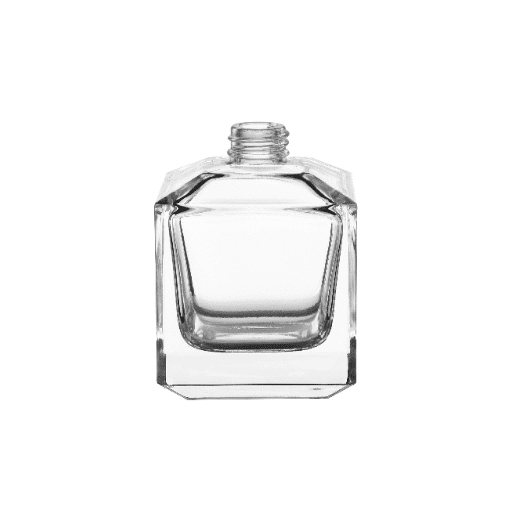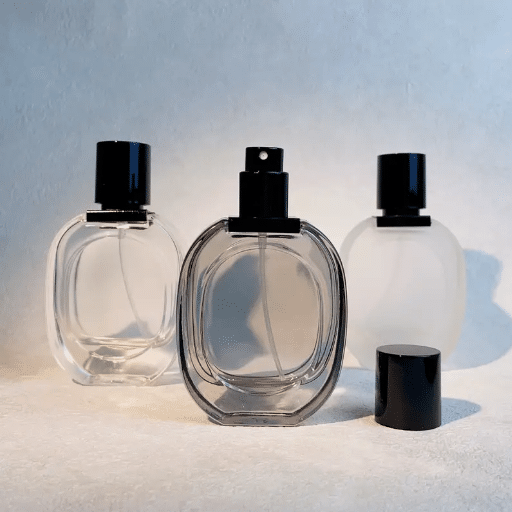Compared to other beauty products, perfumes have a much lower specific gravity and, therefore, are less dense, which is why they are especially prone to unsuitable storage conditions. Even when you are not planning to use the fragrance, it should never be exposed to hot and cold temperatures. By far, using the perfume in either Upper Egypt or Aswan was the period that my mother refers to as the best days of her life. Through this tutorial, all aspects that make sense in terms of decanting will be discussed, ensuring that the perfume retains its complete opulence. Follow this guide, and you will soon become an expert without spilling anything, leaving no residue, and with the perfume well-preserved for future use.
Understanding Perfume Bottles
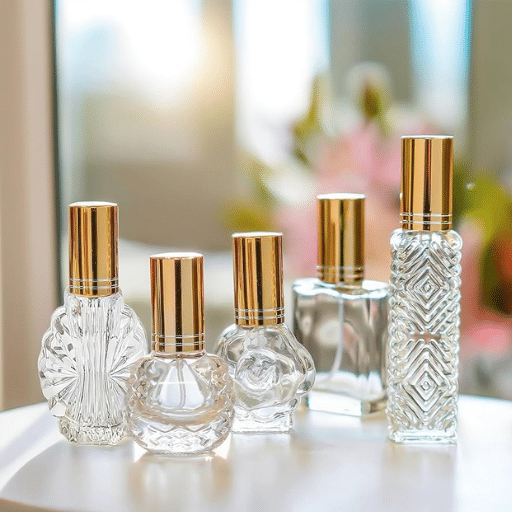
The range of factors contributing to the design of a perfume bottle, including the shape, size, and materials, is almost endless. Such materials include mostly non-toxic materials, such as glass, plastic, and metal, with glass serving as the base, as it does not react to fragrances, which allows for preservation. For every packaging design tool, such as glass containers, there is a non-glass bottle variant. Thus, there are also spray bottles, which are convenient and exact for use, and rollerball bottles, which are suitable for applying the fragrance on the move. In the case of refill atomizers, they were invented for the above reasons, which is why they are well-developed and designed in a way that allows for carrying a small amount of the expensive or best-loved fragrance. This article explains the advantages and applications of such containers, so prepare to think long-term and consider why you need them in detail. From there, you will decide which bottle best suits your activities and preferences.
Types of Perfume Bottles
| Type of Perfume Bottle | Key Features | Best Use Cases | Advantages |
|---|---|---|---|
| Spray Bottle | Offers fine mist distribution | Daily application | Easy and precise to use |
| Rollerball Bottle | Compact with a rolling applicator | On-the-go touch-ups | Portable and mess-free |
| Refillable Atomizer | Refillable, eco-friendly, and compact | Travel or limited quantities | Sustainable and practical |
| Splash Bottle | Open top for dabbing or splashing | Special occasions or rituals | Traditional and elegant |
| Dropper Bottle | Includes a precise dropper applicator | Essential oils or perfume blends | Controlled application of fragrances |
| Solid Perfume Container | Holds balm-like solid fragrance | Travel or discreet touch-ups | No risk of spillage |
| Vintage Bottles | Antique designs, often beautifully crafted | Collectors or luxurious aesthetics | Adds timeless elegance to a collection |
| Twist-Up Bottle | Concealed nozzle that twists open | Quick everyday use | Spill-proof and innovative design |
Choosing the Right Bottle for Transfer
Before recommending the right perfume bottle, which can be used for various types of liquid perfume fragrances or essential oils, it would be beneficial to consider the durability, usability, and design of the bottles. When discussing the best bottle for a person who does not have to be in one place for long, the bottle must be spill-proof, making it simple for everyone to use. For example, the juice twist-up bottle is a suitable option. Others may also consider solid perfume containers for solid perfumes. To meet consumers’ aesthetic expectations, some bottles are old-fashioned yet beautiful, making their use pleasant and allowing them to be used as souvenirs for posterity. Apart from good reasons, roller ball bottles are usually purchased by those who require a specific and economical application. Spray bottles, on the other hand, are handy for uniformly distributing fragrance, making their usage particularly recommendable for perfumes that are mist-inspired. Considering the factors above, it can be asserted that the fragrance in question will be placed and utilized in any manner that you desire.
Common Features of Perfume Dispensers
Portability
Small-sized and portable, most perfume compact dispensers are designed for purse pockets or travel carry cases. This makes it easier for the user to stay up to date with his or her fragrance regimen at all times, since he or she does not have to use the common practice of walking around with full-blown perfume bottles.
Refillable Design
Eco-friendly dispensers have waste reduction as a key aspect. They come with some designs and mechanisms such as a screw-top or a bottom-fill, where one can always refill and keep using the appliance; one need not throw it away after one has used the product once.
Leak-Proof Construction
Good perfume dispensers will have features that help reduce such accidents during travel and will include dependable caps and seals, which keep the liquids where they are supposed to be.
Precise Dispensation
The dispenser comes with its own pumps or rollerballs. This way, it is possible to avoid using perfume excessively. This will preserve the fragrance collection while ensuring the perfect application.
Durable Materials
There are often glass, steel and good-quality plastic that are always used in making air fresheners as they are long lasting and, do not allow the fragrance to melt under environmental stresses such as lights or heat, what are these materials.
Aesthetic Appeal
Some come with very intricate features. Others are simply basic and plain in terms of color, considering their appearance and size. Decorating dispenses aroma, and one adorns elsewhere.
Essential Tools for Transferring Perfume
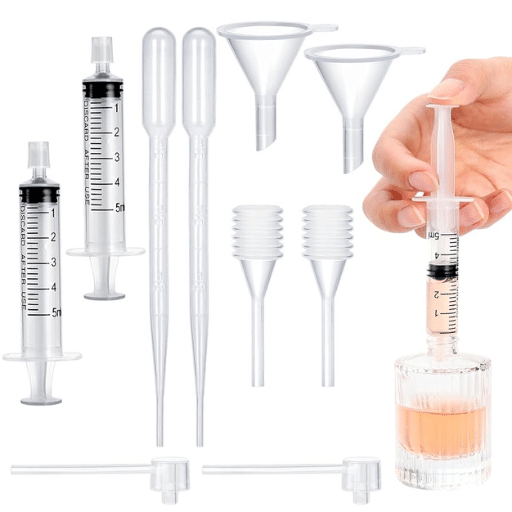
When carrying a liquid, the most crucial factor is the tool you are using. Well, here are some of the most useful in this case:
- Funnel – Narrow-mouthed, small containers with funnels help direct the liquid into the containers without spillage.
- Dropper or Pipette – Appropriate for tiny volumes of substances, the pipette dispenses the exact quantity of liquid.
- Refillable Perfume Atomizer – It is essentially a leak-proof bottle that facilitates easy carrying and application of the fragrance.
- Spray Adapter – Several nozzles or adapters can help in cases where a particular quantity of liquid needs to be transferred into another container, preferably a spray bottle.
- Clean, Dry Cloth – In case of any overspills, wipe off the excess drops and keep the containers free of any spillage.
When these tools are used, the process is well-crafted, disaster-free, and the quality of the aroma is maintained.
Using a Syringe for Precision
One of the most accurate and effective ways to dispense perfume from a bottle is to use a syringe. Begin by cleaning the syringe, as an unpurified syringe can misbalance the perfume’s aroma with its impurities. Place the syringe in the bottle containing the initial fragrance and withdraw the liquid, pouring it very gently to minimize air bubbles. If the liquid volume in the syringe has been measured and reached the intended volume, administer it into another bottle or atomizer carefully. This is the way, which not only helps to avoid any waste, but also is precise and can be used when trying to portion out a bigger bottle into smaller ones for travel. Injections, the technical instrument, are also beneficial as they decrease the chances of the fragrance getting exposed to contaminants, and more so, air when being poured from its original container.
The Role of Funnels in Perfume Transfer
Although necessary, funnels are often overlooked in the transportation of perfumes, as they are convenient, especially when working with bottles that have smaller openings. Their conical form directs the liquid exactly to the intended bottle without flowing out of the intended point. Cones are efficient in preventing liquid loss. Additionally, the inclusion of non-reactive materials in the solvent, such as stainless steel and top-grade plastic, minimizes these losses, approaching zero. Such funnels can also come in the form of sifters; in this case, a sieve will ensure that some solid particles do not enter the new container. Moreover, using a funnel to pour liquid is hygienic since each funnel can be assigned for the use of a specific perfume or liquid, thereby preventing the sharing of clear liquids. Those who have ever had to repack perfumes in one way or another know how vital a funnel is to this task.
Choosing the Right Atomizers and Travel Bottles
Choosing appropriate exterior cases and containers is vital as characteristics, design, and appearance are all considered in the process. The best tip in this case is to go for durable enough atomizers and bottles, which are unlikely to break and spill the precious perfumes in the meantime. A firm, tight-fitting screw so that nothing is ever going to be lost. A feature that is not only necessary but also beneficial for all people who travel frequently. It is essential to know what you are carrying, once you knock into. Most atomizers for travel are airline-friendly, as they are under the 100ml restriction. Last but not least, when it comes to this accessory, it would be nice if the bottle did not require any gadgets to worry about, such as checking the liquid levels; instead, a clear design that shows all the contents would be preferable.
How to Transfer Perfume Safely?
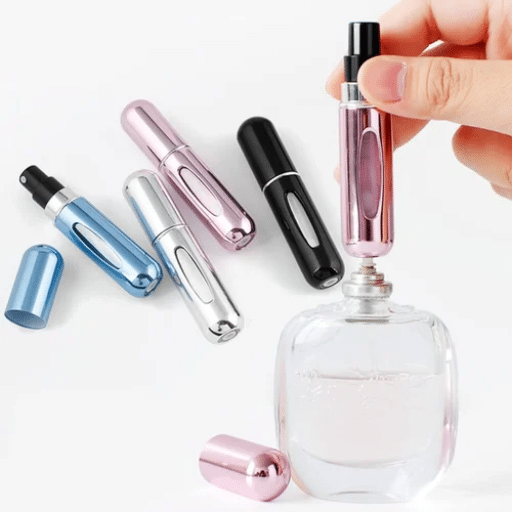
- Choose the Right Atomizer: Select a clean, travel-friendly atomizer or bottle that is leak-proof and made for holding liquids safely.
- Clean the Tools: The atomizer and other related tools (funnels, pipettes) should be cleaned and dried before use to prevent contamination during transfer.
- Use a Funnel or Pipette: For most incense transfers, use an adequate-sized funnel or pipette to transfer the incense into the atomizer without spraying it all over.
- Work in a Safe Area: Carry out the transfer on a level surface, a base that is also paper-toweling, as it helps to capture drips in case they occur.
- Seal the Atomizer: Once it’s full, close the atomizer tightly to prevent spillage. Then, try spraying gently to ensure it’s working correctly.
Step-by-Step Guide to Refilling Your Bottle
Clean the Bottle
If you are using a bottle to store the perfume, it needs to be washed and dried, as well as any new vessels, to avoid mixing or contaminating the scents. Perfume or water filling containers should be scrupulously clean.
Prepare the Liquid
Recommendation: Check the perfume or water to ensure a safe transfer. Do not shake the bottle before transfer, as this can create air pockets that will break up in surging.
Set Up Your Workspace
Mount all the necessary supplies on a level floor and lay a cloth on the working area, especially if it is poor and uneven. In addition, make it a point to ensure that the area is well illuminated to help you see the inner writing better when going to work.
Ensure Precise Pouring
It is a necessity to take the funnel or syringe and fill the substance into the serving container. Lift the bottle and pour carefully to avoid spillage by using slow pouring methods, which will reduce the chances of anything going to waste. This requires some patience as well.
Secure the Cap
When the bottle is filled, do not forget to close or fasten the lid or atomizer so that, even in the event of any movement, the fragrance does not spill from the bottle. If the bottle is equipped with an aerosol, display it to know its functionality before use.
Label Your Bottle
Ought to be mandatory when designing particular mixtures or filling up numerous flasks, it is essential to identify the specific name of the fragrance on the bottle, together with the date, under which the same will be used and stored.
Removing the Cap and Sprayer Properly
It is always important to be careful when trying to unscrew a bottle’s cap and sprayer to avoid damaging or harming oneself. This involves starting the process of removing a pressure cap from a bottle, which is best done carefully and in dry, clean conditions to reduce the risk of slipping while handling. If the cap does not come off easily, you may use a small, flat object, such as a butter knife or a screwdriver, to lift it. Be cautious when doing this to avoid breaking any part of the cap or the bottle. For bottles with stubborn sprayers, it is also a good idea to twist the sprayer while trying to lift it slightly. Some bottles come with a sprayer, while others come with a locking device around the sprayer. In this case, the lock must be disabled before removing the sprayer. Quite handy and protective to use for bottle caps are several long-nose pliers explicitly designed for opening them as well as for expanding pump-removal kits. Please remember to handle the glass bottles with care to prevent any fissures, damage, or breakage. If you follow these removal rules, you will reduce the chances of cap failure and ensure that the sprayer remains intact, allowing it to be used for a second time.
Tips for Avoiding Spills and Waste
Use a Funnel for Transfers
Whenever you pour or transfer fluids from one container to another, try to use a funnel. These come in handy as they ensure all of the material reaches the recipient container and facilitate the prevention of any spillages. The statistics on funneling are awe-inspiring, entailing an 85% reduction in spillages, which remains effective even when pouring directly.
Work Over a Sink or a Tray
It is always recommended to carry out any liquid handling job within a sink or a spill-proof tray to lessen any spillage. Such an act of prevention and containment not only reduces unnecessary spills but also further eases cleanup and minimizes the risk of damaging adjacent surfaces.
Wear Protective Gear
It is essential that you always wear gloves and, in some cases, a plastic apron when working with various types of liquids that you fear may irritate your skin. With appropriate clothing in place, unintentional contact and ensuing accidents are less severe.
Label Containers Clearly
Mislabeling or no label at all can be a contributory factor to spills or misuse of the liquid. It is advisable to have waterproof tags with all the necessary details regarding the contents of the bottle and the date of storage. Proper labeling ensures minimal errors and reduces mismanagement of the resource.
Seal Containers Properly
Please make sure all containers are covered and properly sealed. Bottles without tight-fitting lids tend to leak; the situation worsens during storage and movement. Furthermore, please insert any caulk or grout to prevent evaporative and unnecessary environmental loss.
Use Measured Doses
Additionally, providing liquid medications in multiple dosages can help avoid drips when using measuring cups or droppers, which can result in over-pouring. Such a system prevents oversupply and allows a person to deliver precisely the required amount, therefore reducing any waste.
Common Pitfalls to Avoid
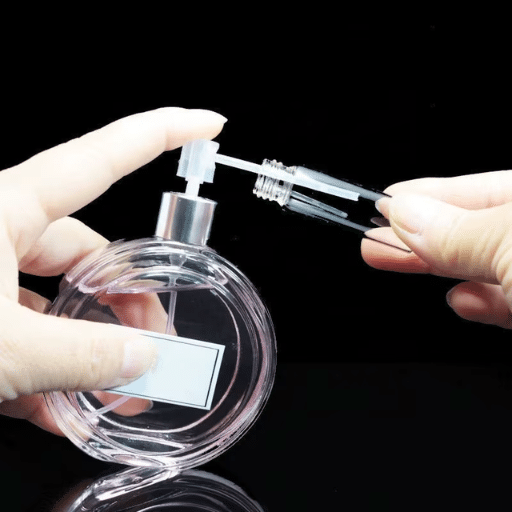
Overlooking Proper Storage Conditions
Failing to store liquids in appropriate environments can lead to contamination, degradation, or spoilage. Always consider temperature, humidity, and exposure to light when storing.
Ignoring Expiry Dates
Using liquids past their expiration date can decrease effectiveness or cause unexpected reactions. Regularly check labels and dispose of expired products responsibly.
Using Incorrect Containers
Liquids that are not in their original containers or that are stored in incorrect containers can cause messes in the form of liquid spillages, leakage, or a potential chemical reaction. Use only containers that are specifically designed for the type of liquid being preserved.
Skipping Labels
An absence of any labels on such containers presents a potential for confusion and an increased likelihood of misuse. All containers should have completed labels that clearly state what is inside, as well as the necessary precautions to be observed.
Failing to Wear Protective Gear
Additionally, the absence of appropriate safety equipment increases the risk of handling such liquid contents, which may result in spillage, direct contact with the liquid, or skin irritation. Therefore, the safety of the operator shall always be highly regarded.
Choosing Incompatible Materials
Combining the inappropriate material with a working fluid can result in destructive reactions, structural collapse, and, most commonly, contamination. An example of this is the incompatibility of steel with a low temperature range when used in conjunction with a liquid that requires a lower temperature, which causes cracks in the metal due to thermal expansion. Additionally, the improper selection of materials and fluids can lead to unwanted inhalation issues or unexpected chemical reactions, which are highly unsafe for both individuals and the environment. For practical reasons, it is essential to consistently refer to the material compatibility charts or guidelines provided by different manufacturers. Another way to address this problem is to conduct tests or a hazard study with the assistance of experts to determine whether the chosen materials are indeed suitable for the purpose, while also being stable and, most importantly, safe.
Neglecting Safety Precautions
Failing to follow safety precautions regarding materials and chemicals is likely to be highly damaging, both in the short and long term. Recent estimates suggest that many cases of chemical storage failure, including mixing at the workplace, have led to incidents such as overspill, fire outbreaks, and injuries to personnel. Research, above all, underlines that in cases when reasonable work safety regulations are not observed, there are higher chances of pollution, the release of harmful substances into the environment, as well as legal consequences. Furthermore, incompetence in enforcing security measures may cause wear and tear on equipment or facilities, reducing their lifespan and increasing maintenance costs. ReactiveFormsModule education, safety inspections, and awareness of new regulations should help prevent most of these problems.
Overfilling and Its Consequences
Overfilling, whether in industrial tanks, fuel storage systems, or waste containers, poses significant safety and environmental risks. For example, in situations involving refineries and chemical-related industries, it can result in hazardous spillages due to overloading. This may place workers at risk of exposure to harmful substances, in addition to polluting the region. In addition to incurring expenses related to cleanup, these mishaps also incur fines and lawsuits, leading to health hazards for many people.
Swift advancements in science, industry, and commerce have led to the development of numerous processed and technologically advanced products and operations. Overfilling, typically caused by mechanical equipment such as valves in pipelines and service systems, has been identified as a root cause of various types of incidents, including those with catastrophic consequences. Applicable devices often experience complications such as bending stresses, dead weight racking forces, and problems due to atmospheric effects in many cases. This reinforces the belief that breakdown is inevitable, while also reducing the risks.
Moreover, in waste management, overfilling also causes accidents during waste disposal. Often, this will contribute to poor disposal methods, which are harmful to the environment, such as soil and water pollution. Deploying improvements to monitoring, such as automatic gauging, is very significant in preventing such risks. Furthermore, providing employees with training on the issue and storage quotas is necessary to avoid any overfill scenarios. Prevent vacancies or long-term underutilization, which can cause injuries to employees and damage to the environment.
Best Practices for Perfume Storage
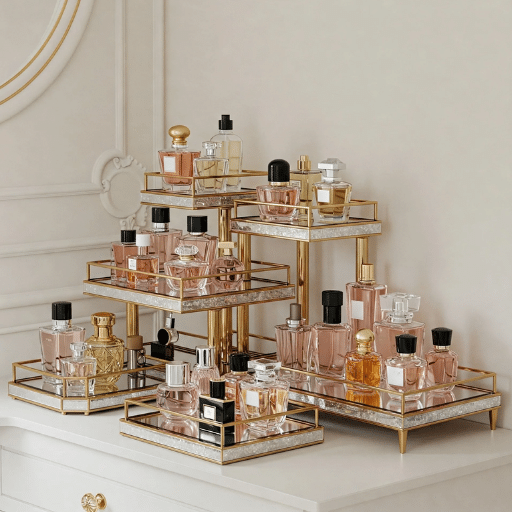
Store in a Cool, Dark Place
Due to several factors, including the oxidation of essential oils, the natural color of some essential oils, and the potential for product coagulation, mixing perfumes, especially floral blends, is not advisable.
Keep Bottles Sealed
Store unused fragrance bottles properly, with the cap tightly on, to prevent aroma loss and maintain their components within targeted functional parameters.
Avoid Humid Environments
High humidity levels can damage fragrance. As much as possible, see to it that the offending commodity is not placed upside down.
Use Original Packaging
Keeping perfumes within their packaging can help protect them from bright light and maintain their temperature, thus preserving their quality for an extended period.
Minimize Air Exposure
Suppose more than one or a few applications need to be made to the body. In that case, it is advisable to use smaller bottles or those that have been decanted, to prevent the one in question from coming into contact with a larger percentage of air, which causes oxidation to occur sooner, making its use impossible.
Travel Tips for Carrying Perfume
Use Travel-Friendly Sizes
It is recommended to limit travel-sized spray bottles to 3.4 ounces or 100 ml in cockpit size, subject to airline flight limitations. Despite this, the majority of brands offer carry-on, registered pocket-sized avion-size luggage from the branch, which is very helpful in this process.
Invest in a Travel Atomizer
Carrying your favorite fragrance while on the go is easier thanks to refilling engravings – these are travel atomizers with a suitable bottle design that house a few milliliters of perfume and prevent spills.
Securely Pack Your Perfume
To prevent damage or spillage, it is recommended to use soft fabric or bubble wrap around the perfume bottles and put them in a sealed plastic bag. As these may be handled too roughly and incur damage, it is wiser to carry them at all times in the hand luggage.
Store in a Cool, Dry Place
Never let your perfume come into contact with extreme weather conditions during transit, as exposure to sunlight or heat can alter the perfume’s scent and physical properties, potentially affecting its quality permanently.
Repack Perfume Upon Arrival
Furthermore, as soon as the destination is reached, the occupants should retrieve their perfumes from the bags and store them in a superb, dark location without delay to avoid any subsequent deterioration or loss of quality.
Long-Term Storage Solutions for Rare Fragrances
Preserving rare, luxurious scents in storage is essential to maintain their original scent and quality. Precisely, the practice of first keeping perfumes in their original packages or enclosed and tightly sealed containers can help prevent fading of the colors in the emulsion levels, as light tends to break down one of the most common characteristics of perfume. It is also important to note the importance of maintaining a consistent temperature, as temperature variations can harm the internal structure of a given perfume. Maintaining a room temperature at all times is a valuable principle in this regard, despite the ideal temperature range being between 60°F and 70°F. Moreover, the most common and hazardous elements to be considered are humidity, which is often one of the causes of a perfume’s diminishing, and as such, it is advisable to keep the fragrance in a place that does not attract a lot of moisture, such as a wardrobe. It is recommended to reserve a wine cooler or a special, delicate-goods refrigerator for the rare and old-fashioned perfumes. Lastly, always maintain a tight cover on perfume bottles to reduce access to air; air leads to evaporation and makes the captivating fragrance less appealing over time. All these delicate steps should be remembered to ensure proper handling of your luxurious, rare fragrances.
Reference Sources
-
Analysis of transferred fragrance and its forensic implications
- Summary: This study explores the transfer of perfume as a factor of contact time and perfume aging. It uses advanced spectrometry methods to analyze trace amounts of perfume, providing insights into how perfumes transfer between surfaces and their forensic applications.
-
The diffusion of perfume mixtures and the odor performance
- Summary: This paper investigates the evaporation and diffusion behavior of perfume mixtures, focusing on how these factors influence odor performance. It provides a detailed analysis of the evaporation path and its impact on fragrance longevity.
Frequently Asked Questions (FAQs)
Q: How do I transfer perfume using a funnel?
A: To transfer fragrance without much spillage from perfume to another perfume with the help of a funnel, you will need a small funnel that can be fixed into the opening of the new perfume bottle. Work starting from the top: make sure to remove the cover and the sprayer from the initial bottle to prevent clogging. The funnel should be put into the hole of the new perfume bottle, and then you can start emptying the perfume from the previous bottle into the funnel. This way, there will be no spillage of the perfume, and also, there won’t be any evaporation processes, so all the perfume will be transferred to a smaller capacity bottle.
Q: What tools do I need to remove the cap and sprayer from a perfume bottle?
A: Conclusively, it can be that removing the cap and sprayer from a perfume bottle is a problem that any woman who uses perfume will one day have to face. You may also need additional help, such as a small flat screwdriver or a prying tool. Ensure that you avoid damaging the bottle’s neck over which a cylindrical spray cap is tightly fitted. You may even find that releasing a cap that holds the sprayer tightly in place requires the help of a plastic tube to press the sprayer and resist its clockwise movement at the same time. You must spill as little liquid as possible; therefore, it is also good to perform all this in a ventilated area, particularly in powerful perfumes.
Q: Can I use a syringe to transfer perfume safely?
A: Correct, inserting a syringe into the perfumes and taking it out of the bottle is a non-problematic way. Thanks to the plastic syringe, it’s possible to draw perfume from the bottle by moving the plunger backwards. Ensure that the syringe is clean and free from contamination to prevent it from imparting an odor. Then, when it is ready, one can lightly press the plunger down to dispense the perfume into the new receptacle. This strategy is suitable in instances where only a small portion of the perfume needs to be moved. For example, when packaging five-millimeter bottles for travel. However, ensure that the syringe remains in an upright position throughout the transfer process to prevent any spillage.
Q: What should I consider when transferring perfume to a smaller bottle?
A: Suppose you are refilling the liquid within a perfume bottle to a reduced area size. In that case, one should take into account both the type of bottle and its size. Glass bottles are made of glass rather than plastic, as they help prevent interference with the fragrance quality by odors coming into contact with plastic. In contrast, plastic, on the other hand, has a quiet volume, allowing the fragrance to lose its scent. Moreover, do not forget to check if the smaller bottle is provided with a Spray nozzle or any other suitable closure that will keep the product inside from evaporating. Equally as important is the filling process itself. In this case, if one is to extract liquid into a 100 ml bottle, they will also need to use a syringe or a funnel, if necessary, to fill the smaller bottle without spillage.

